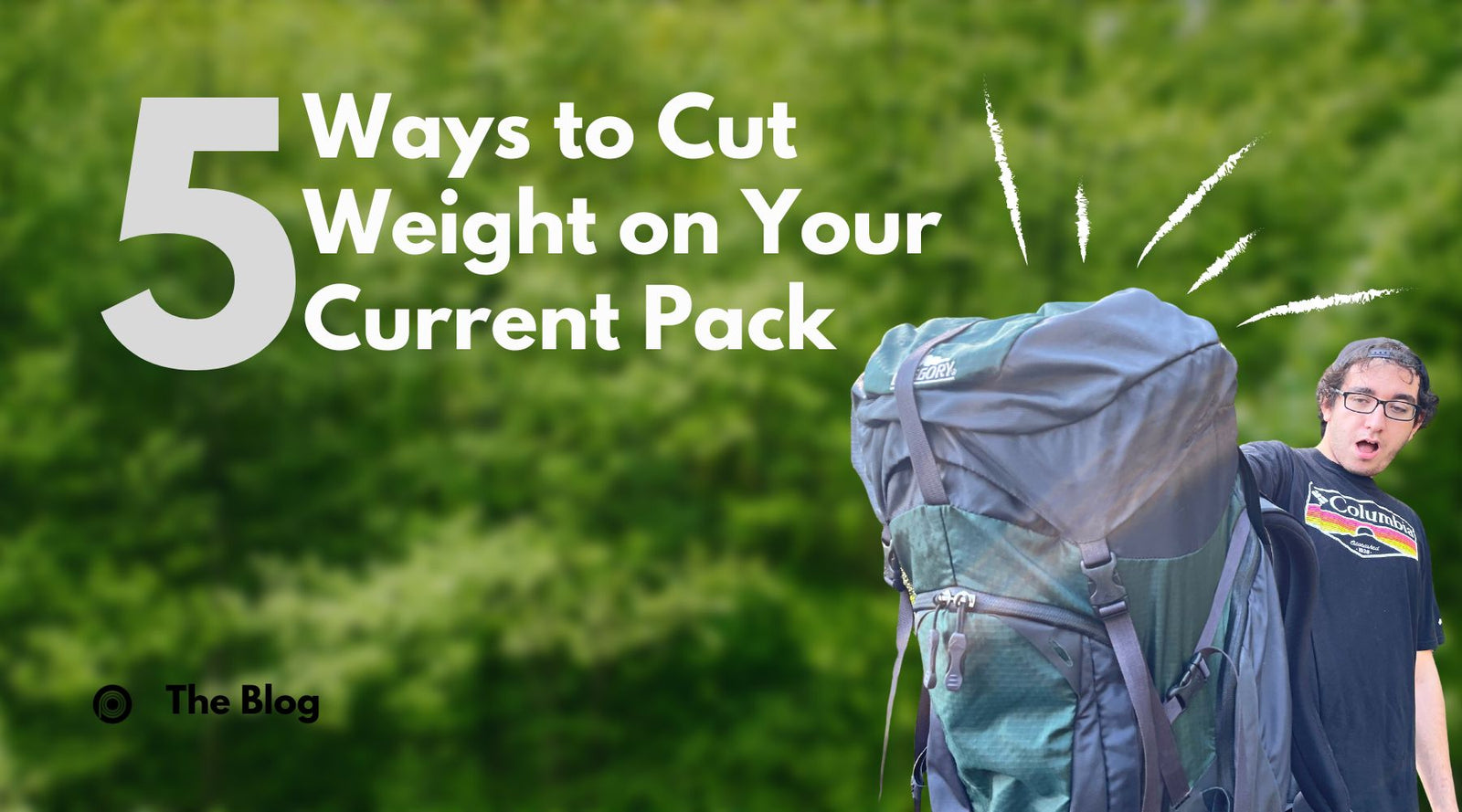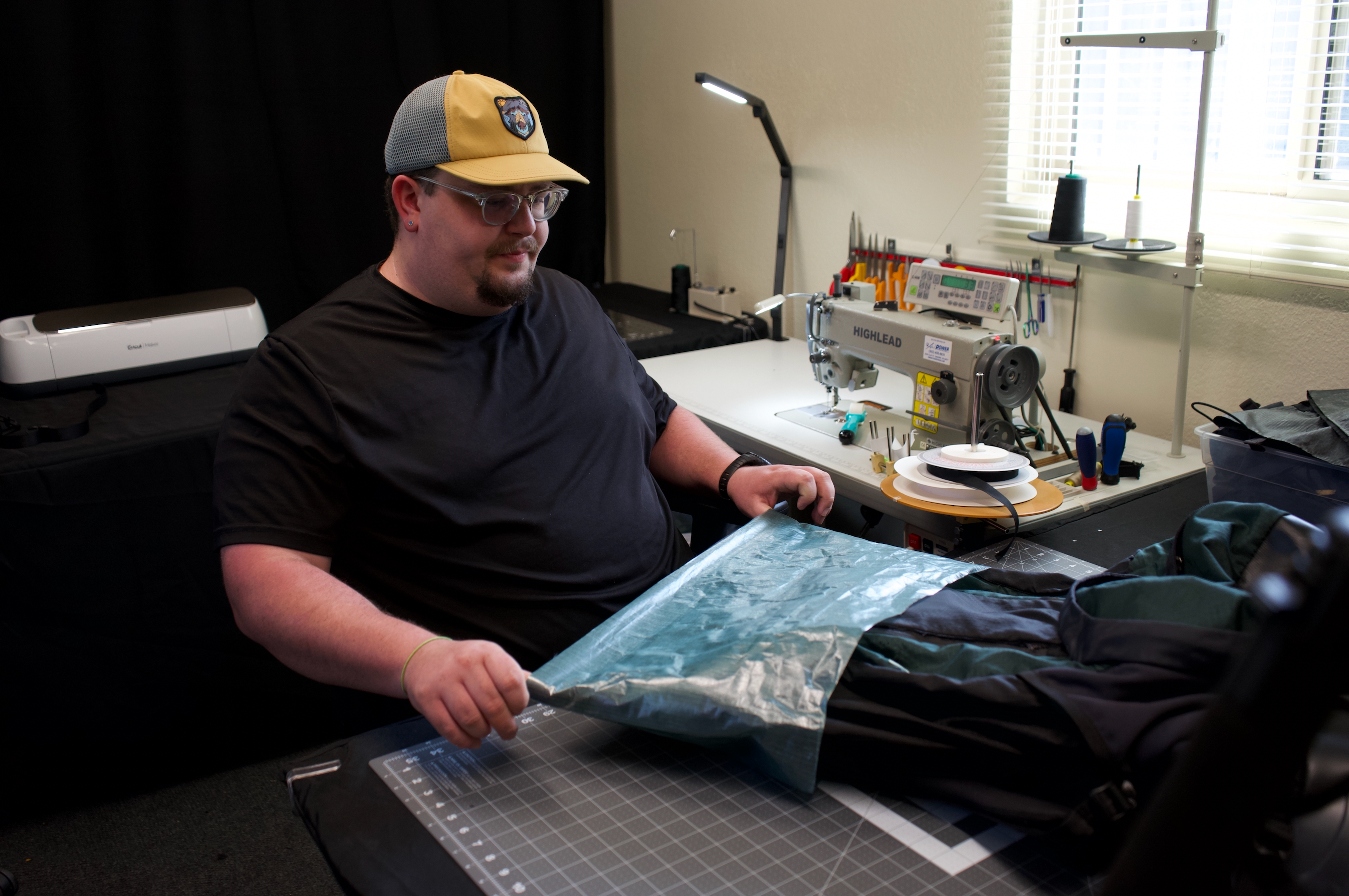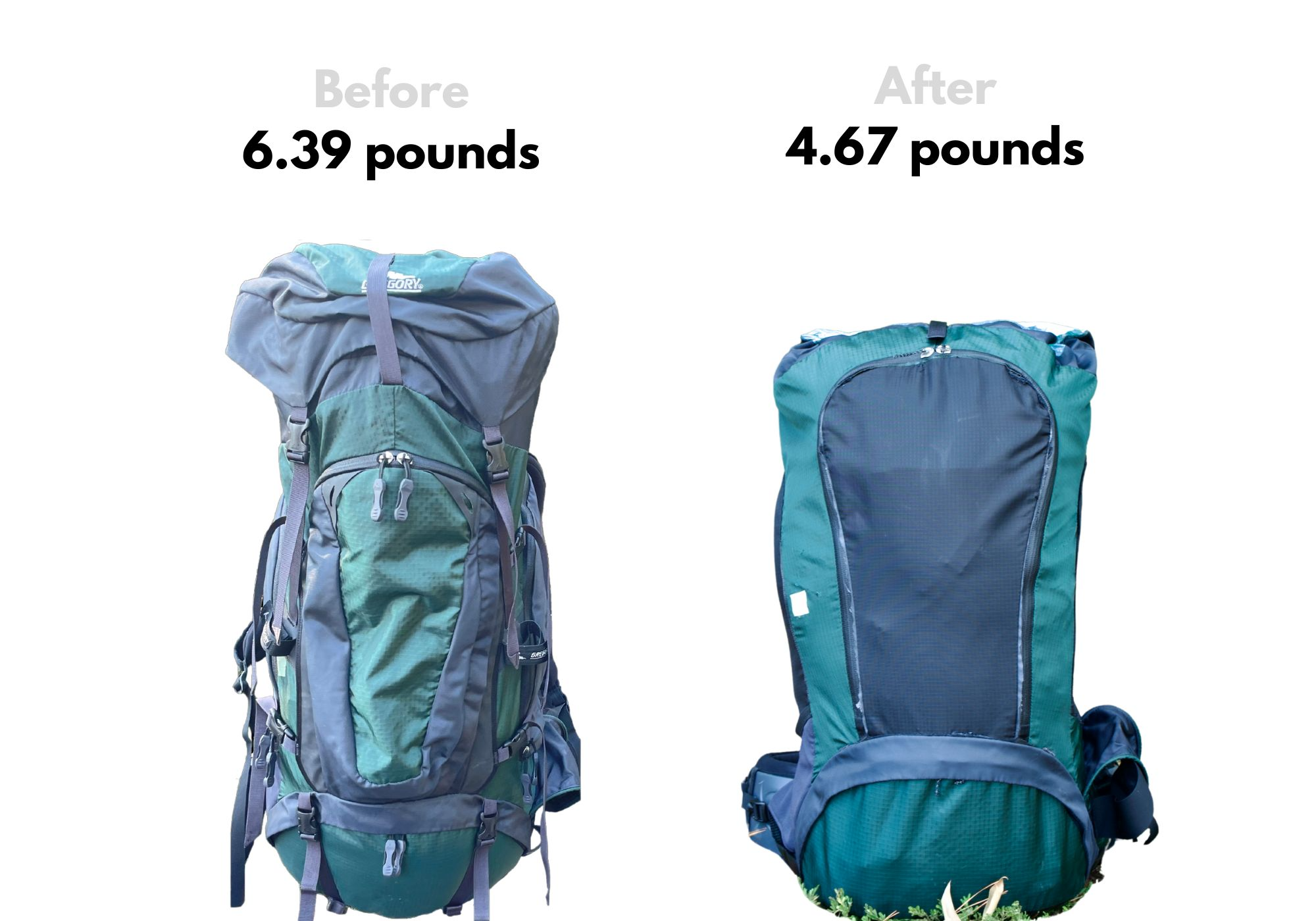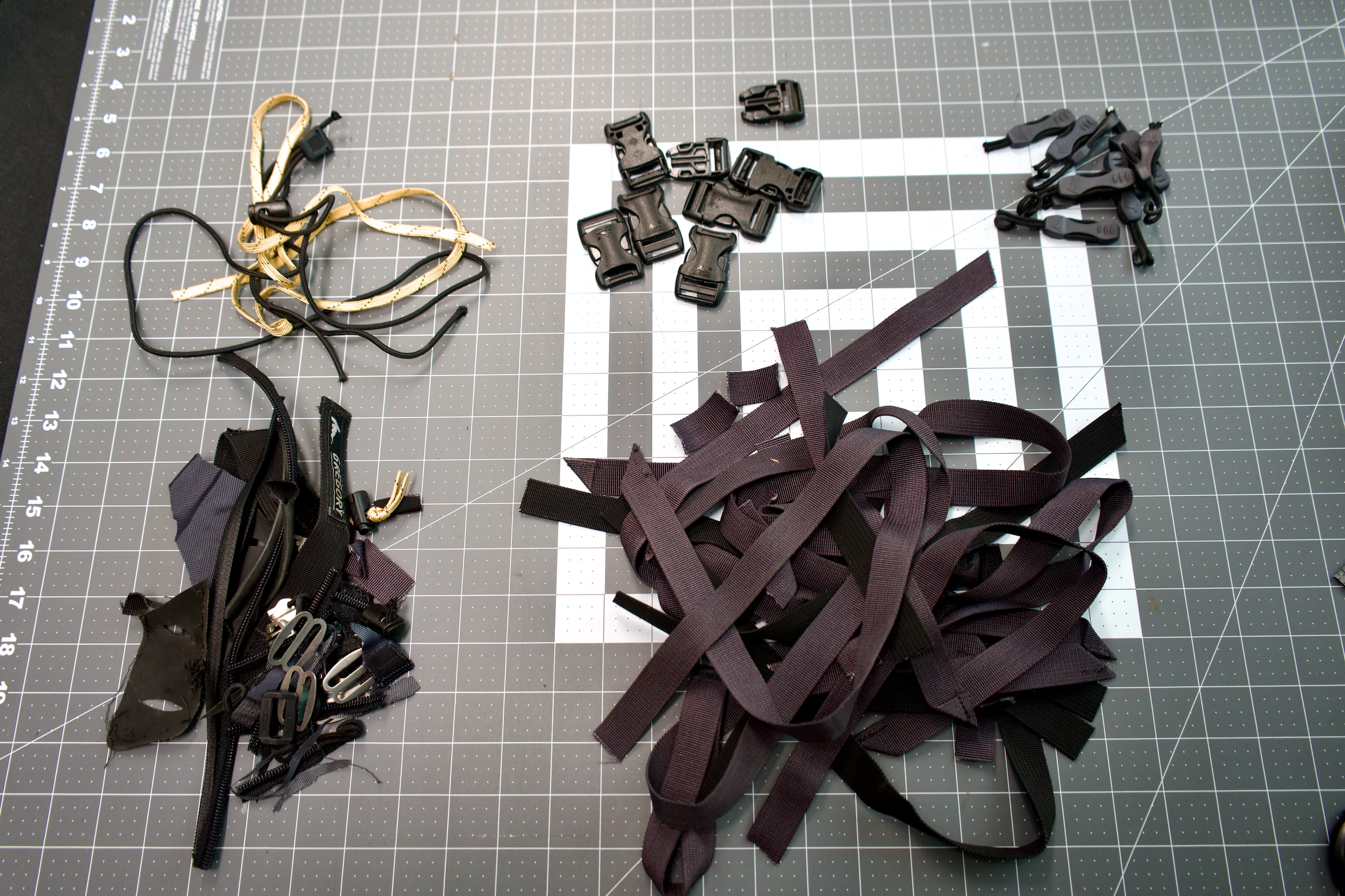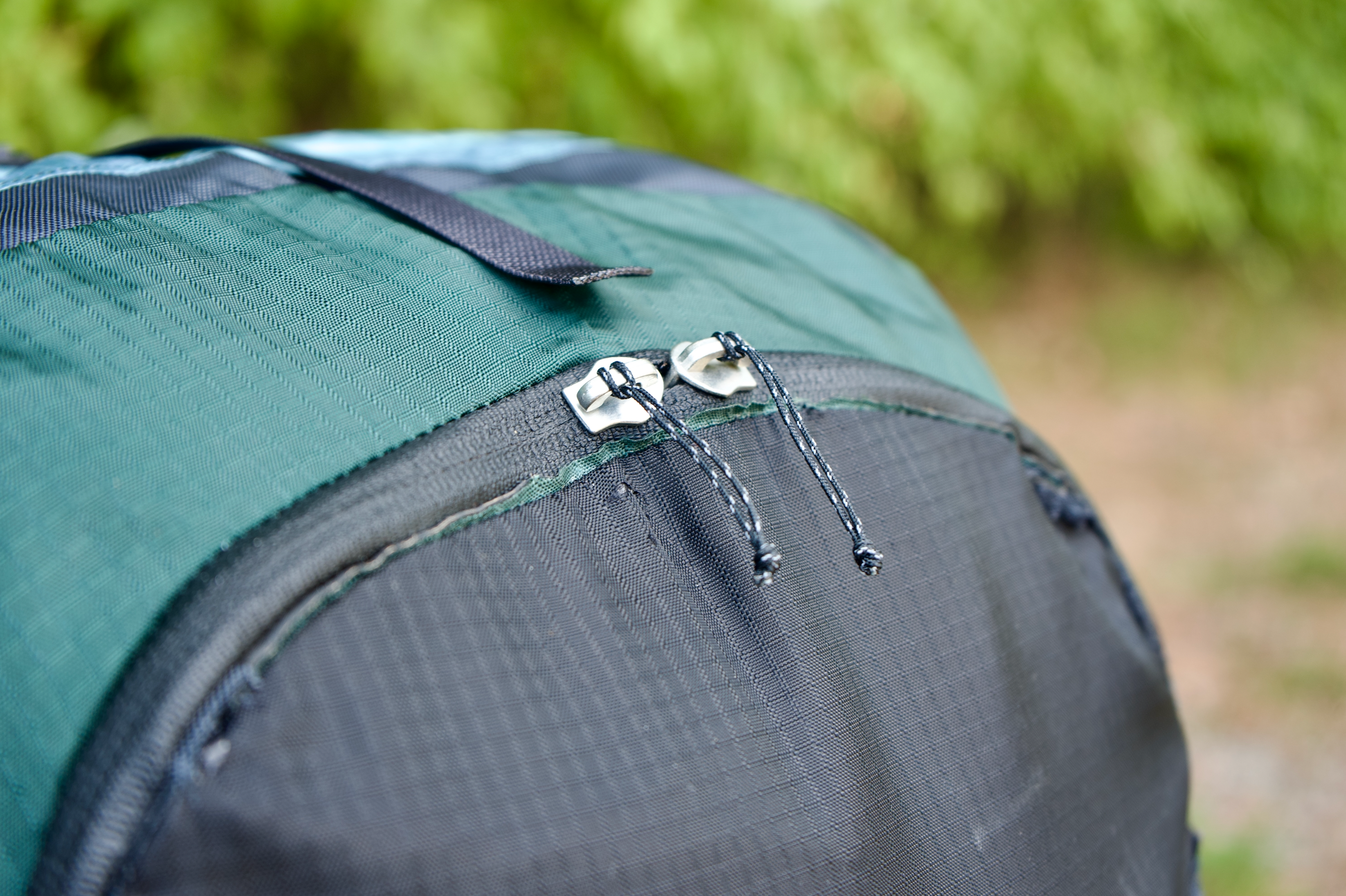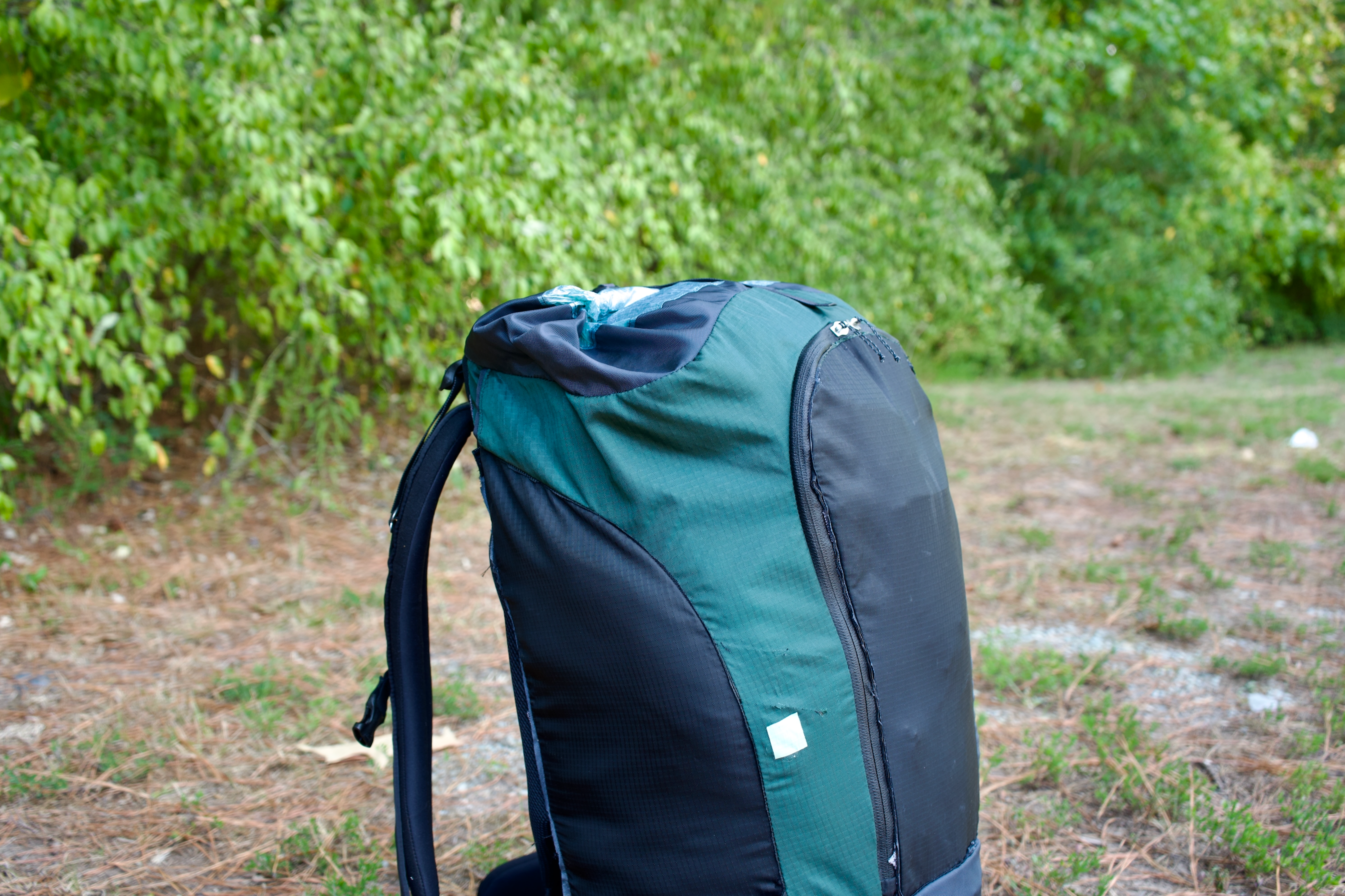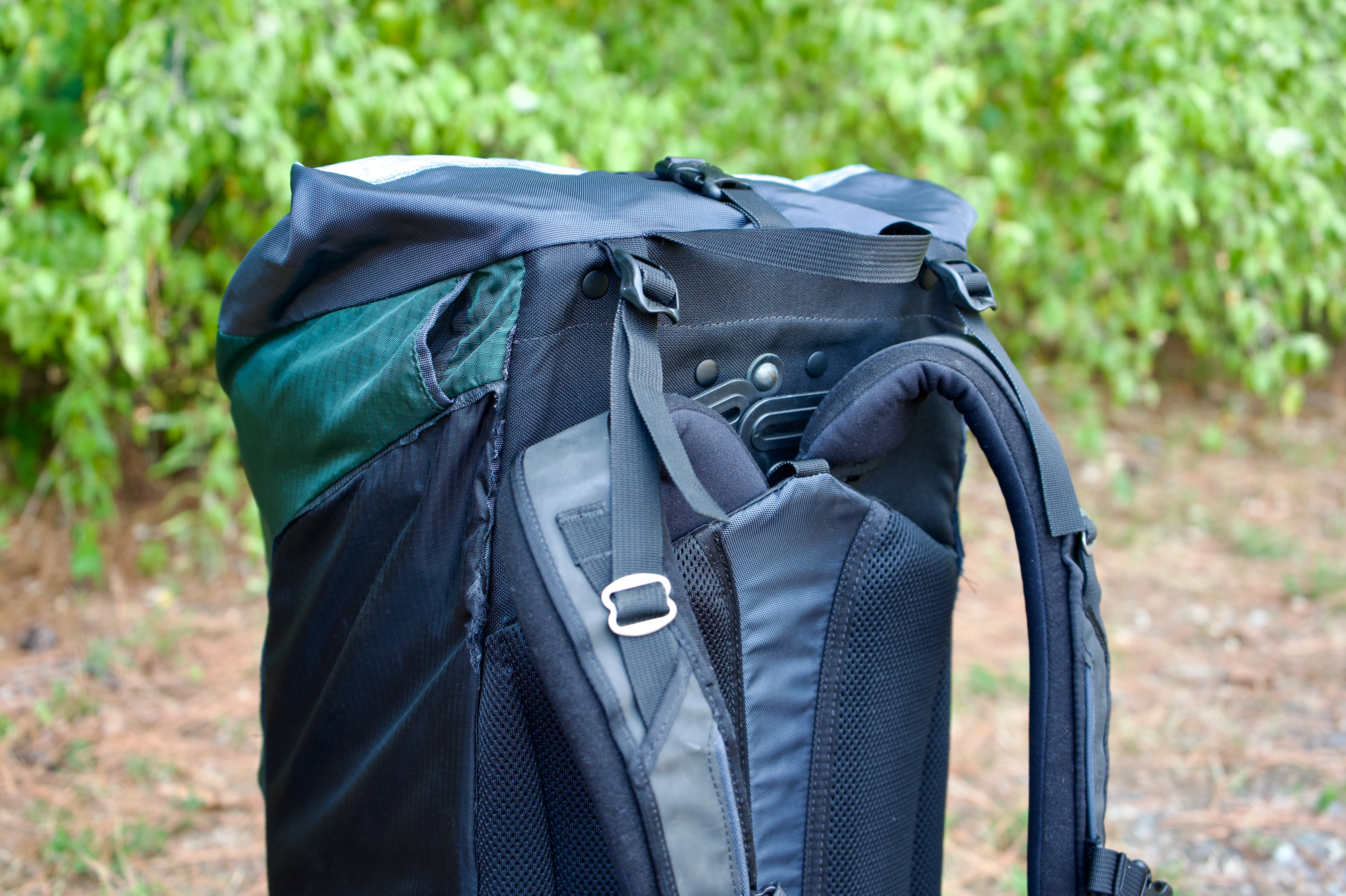Your Cart is Empty
We believe that people should have the power to create their own paths.
Sometimes that means creating something from scratch. Other times that means making changes to what you already have.
In this blog, we will give you 5 techniques to use on packs you already own to make them LIGHTER.
We loved this idea so much that we turned it into a podcast that you can listen to on Wednesday, Sep 14.
*PLEASE NOTE*
We love all packs. If it gets you outside, then it's a good pack (no matter the weight or design). This blog in no way condemns any manufacturer, company, or designer. We simply want to oblige those of you intrigued enough to shave some weight.
To test our theories, we've taken an old Gregory Baltoro 75 and applied these methods to see how much weight we could shave.
The starting weight of the pack was 6.39 pounds.
Read through the blog to see where we saved weight and to see how light we were able to get.
Many big time manufacturers install bulky and exaggerated zipper pulls because they look good and feel nice to the touch.
We recommend replacing the sliders with our 1.0 or 1.5 mm reflective Poly/UHMWPE cord.
Changing to a DIY style zipper pull will save you weight, make your zippers look custom, and still function perfectly.
On the Baltoro, we removed 0.8 oz (22.69 grams) worth of zipper pulls.
Shock cord is a great accessory to have on a pack. We're huge proponents of shock cord - so long as it's the correct diameter.
In many applications, thick shock cord (1/8" or more) is unnecessary. Check out slimmer (and yes, lighter) options like our 3/32" and 1/16" shock cord. (Reflective shock cord also available here)
If you have a thick diameter shock cord then you likely also have a large cord lock. Changing to a lighter shock cord means you can get a lighter cord lock such as our Micro Cord Lock or Anchorable Cord Lock."
On the Baltoro, we removed 0.8 oz worth of shock cord + cord locks.
When manufacturers create a pack, they are expecting thousands of users of all different shapes and sizes to buy the item. With that in mind, designers leave quite a lot of extra webbing in key places so the pack will fit anyone.
Our third tip for cutting weight is cutting excess webbing off of your pack. Before you take scissors to the narrow goods, make sure you appropriately size the pack and give yourself a few inches to breathe.
Pro tip: Burn the edges of the webbing to make sure they don't fray.
On the Baltoro, we removed 4.1 oz worth of webbing and 2 ounces worth of buckles.
Shop Cutting Accessories here:
A lot of the structures built into mass-produced packs are redundant or overkill for what you may need. Assuming you've spent a lot of time with your pack, you'll have a good idea of what parts are necessary.
If a pack has a frame sheet, frame, and hip belt, foam insert, (or others) chances are, you won't need all of those things.
If you're an ultralight enthusiast then you may not want the hip belt. If your pack has a frame then you can remove the frame sheet.
Assess your preferences, hiking style, and comforts to make an educated choice.
You may also think about slimming down the features within the pack. If there is a foam or frame sheet try getting a lighter sheet to replace. I.e. Thin flexible cutting board, closed cell foam, etc.
Due to how the pack was made, we were not able to remove any structural pieces on the Baltoro.
Pack manufacturers don't know all of our preferences. When they design a pack they have to take an aggregate score of all of our favorite features and include them in a meaningful way.
For example, a hydration bladder pouch isn't needed for someone that uses soft flasks. A hip belt pouch isn't needed for someone that carry's a fanny pack. What does that mean for you? Your pack has features that you don't use - making it dead weight.
We removed the following items from the Baltoro, shaving 1.1 pounds.
Hydration Blader = 1.9 oz
Brain = 6 oz
Pack Divider = 0.5 oz
External Pockets = 6.8 oz
Depending on what you remove, you may need to replace or reconstruct a small portion of the pack.
This tactic enabled us to remove a large portion of the heavier fabric on the top of the pack.
Original cinch top collar weight: 3.2 oz
DCF roll top collar weight: 0.5 oz
We wanted to cut off a lot of the weight that was on the top of the Baltoro. In order to do that we needed to replace the top closure with a 0.8 oz Dyneema® Composite Fabric roll top closer. (We used an UL Side Release Buckle and 1/2" Nylon Grosgrain.)
Hopefully this project inspires you to try something on your pack. If some of these steps intimidate you, then try one or two.
Although some of these cuts don't appear to be much, the mindset of cutting weight is what pays off in the end.
The starting weight of the Baltoro was 6.39 pounds.
After our adjustments, the pack weighed in at 4.67 pounds.
Meaning we cut 1.72 pounds of needless or adjustable features off of the pack. A great win for people looking to go lighter without breaking the bank.
Thanks to our General Manager, Jason Smith, for allowing us to take his beloved pack for the sake of science and weight weenies everywhere.
Comments will be approved before showing up.
